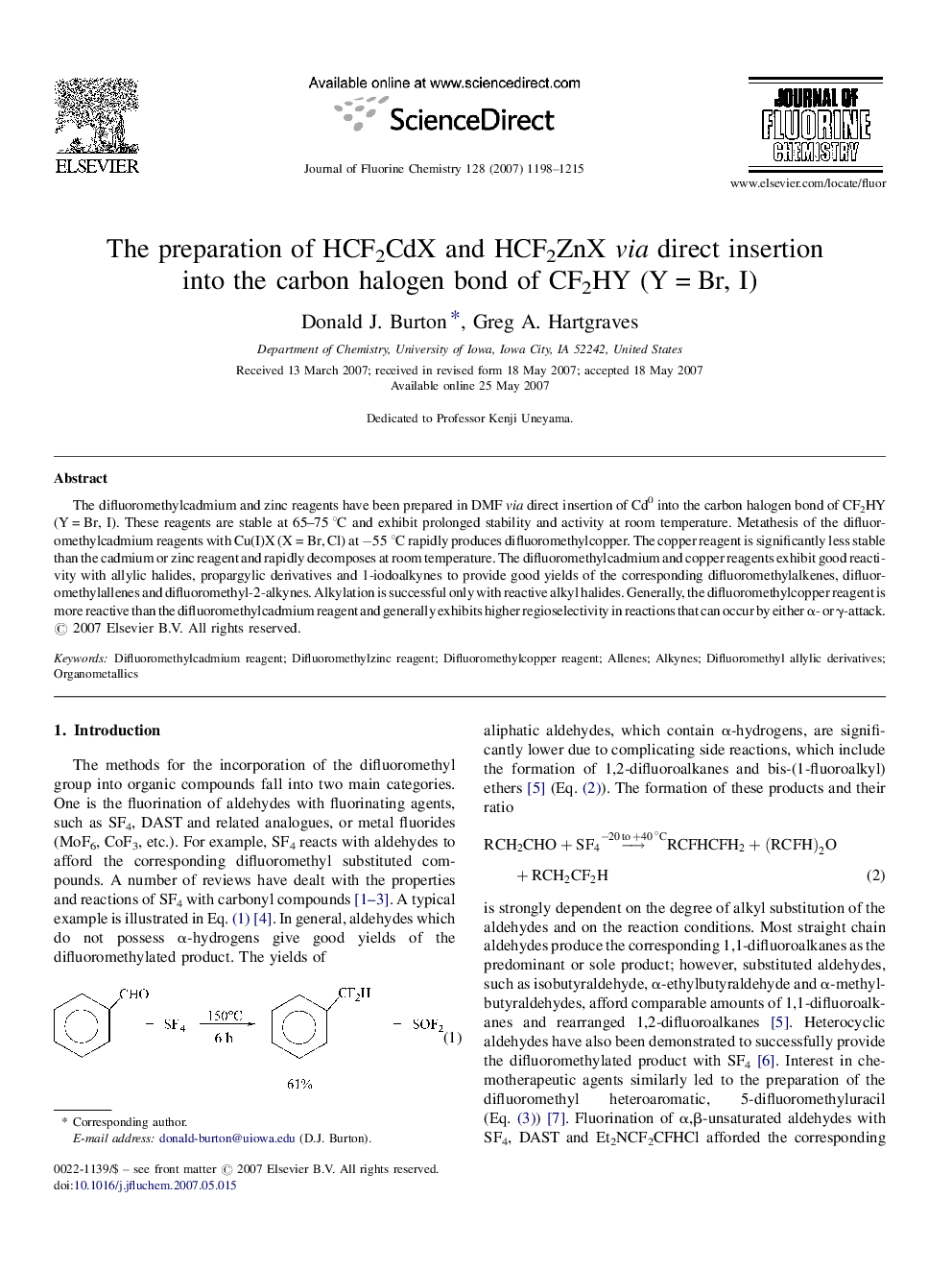| کد مقاله | کد نشریه | سال انتشار | مقاله انگلیسی | نسخه تمام متن |
|---|---|---|---|---|
| 1314810 | 975987 | 2007 | 18 صفحه PDF | دانلود رایگان |

The difluoromethylcadmium and zinc reagents have been prepared in DMF via direct insertion of Cd0 into the carbon halogen bond of CF2HY (Y = Br, I). These reagents are stable at 65–75 °C and exhibit prolonged stability and activity at room temperature. Metathesis of the difluoromethylcadmium reagents with Cu(I)X (X = Br, Cl) at −55 °C rapidly produces difluoromethylcopper. The copper reagent is significantly less stable than the cadmium or zinc reagent and rapidly decomposes at room temperature. The difluoromethylcadmium and copper reagents exhibit good reactivity with allylic halides, propargylic derivatives and 1-iodoalkynes to provide good yields of the corresponding difluoromethylalkenes, difluoromethylallenes and difluoromethyl-2-alkynes. Alkylation is successful only with reactive alkyl halides. Generally, the difluoromethylcopper reagent is more reactive than the difluoromethylcadmium reagent and generally exhibits higher regioselectivity in reactions that can occur by either α- or γ-attack.
Difluoromethylcadmium is readily prepared by oxidative addition of cadmium with iododifluoromethane and bromodifluoromethane. The difluoromethylcadmium reagent is thermally stable to 65–70 °C; rapid decomposition occurs at temperatures >105 °C. At room temperature the reagent is stable for weeks and only loses 31% of its activity after 2 months at RT. The difluoromethylcadmium reagent reacts readily with allylic halides at RT to give products of both α- and γ-attack in good yields. Metathesis of the difluoromethylcadmium reagent with Cu(I)X (X = Cl, Br) in DMF at −55 °C readily gives the difluoromethylcopper reagent. The copper reagent is stable only at low temperatures (−30 to −55 °C) and rapidly decomposes to HCF2CF2H and cis-CFHCFH above these temperatures. However, HCF2Cu is more nucleophilic than HCF2CdX, and the copper reagent readily reacts with allylic halides at −55 °C. The regiospecificity of HCF2Cu is vastly superior to HCF2CdX and most of the reactions of HCF2Cu with allylic halides occur regiospecifically. When HCF2CdX is reacted with propargylic halides or tosylates, the predominant product is the corresponding allene. The HCF2Cu reagent again is more reactive, completely regiospecific, and in most cases gives good isolated yields of the allenes. The HCF2Cu reagent also readily couples with 1-iodoalkynes and 1-iodoperfluoroalkynes to give good yields of the corresponding difluoromethylalkynes. The HCF2Cu reagent only undergoes alkylation with reactive alkylating agents, such as chloromethyl ethyl ether and benzyl bromide. Reaction with allylic halides, propargyl halides and 1-iodoalkynes provides HCF2-substituted allylic halides; HCF2-allenes and HCF2CCR(RF).Figure optionsDownload as PowerPoint slide
Journal: Journal of Fluorine Chemistry - Volume 128, Issue 10, October 2007, Pages 1198–1215